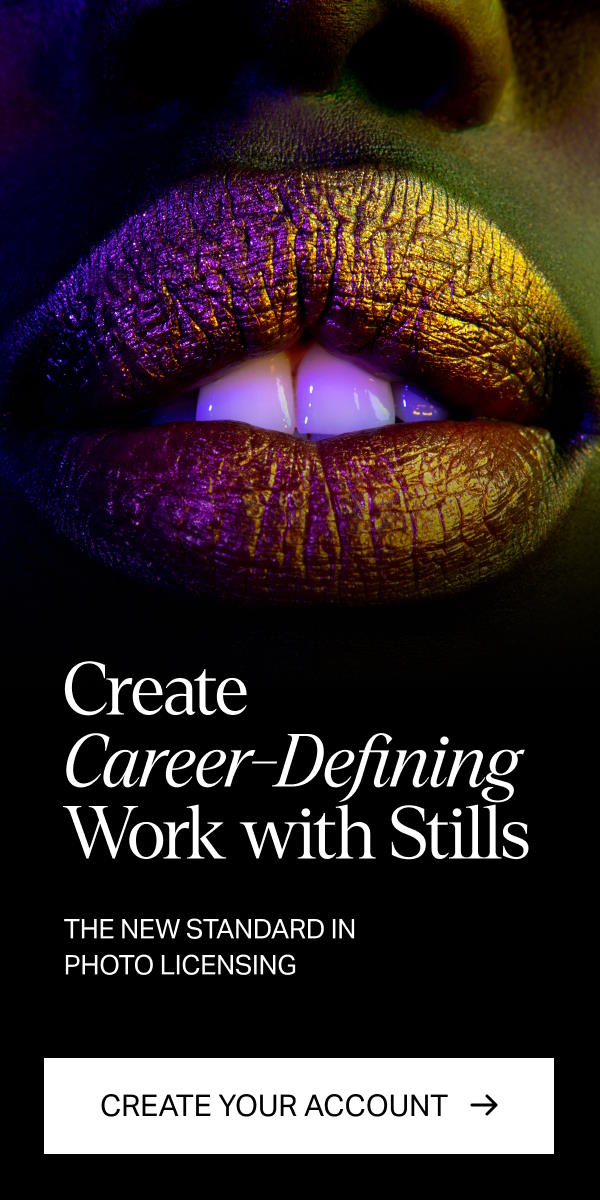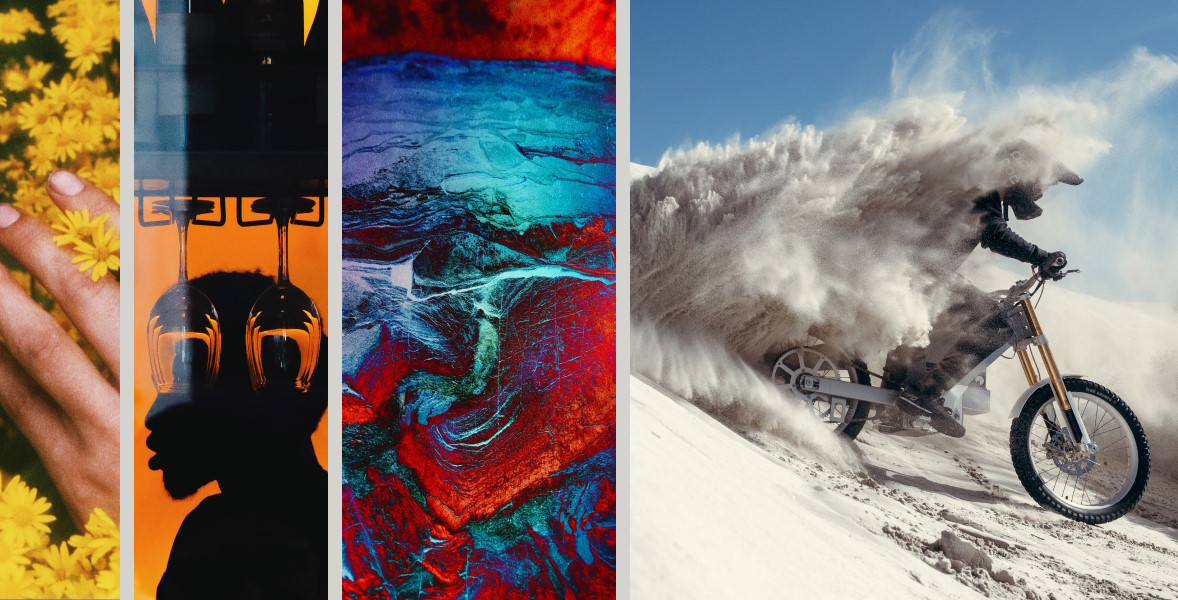Jack Chitty is a London-based self-taught graphic designer who has built a successful career by defying traditional paths. His unique approach to design, fueled by a relentless curiosity and a passion for storytelling, has allowed him to carve out a niche in the industry. In this interview, Chitty shares insights into his design process, the challenges he’s overcome, and the lessons he’s learned along the way.
Stills: Describe your design process and how it’s changed as you’ve evolved.
Jack Chitty: I’m fortunate to have been a junior designer growing up with social media because it helped me get direct insight into other successful designers’ processes. Not only that, but I have never been professionally trained in graphic design, so I haven’t had any processes forced on me.
This handy combo meant I could stress-test elements of other designers’ processes and see what worked for me. If it didn’t work, I’d bin it and try something else. I’ve done this consistently throughout my career and continue to refine my process daily. As it stands, my identity design process looks like this:
Brief/mood boarding
I provide my clients with a briefing questionnaire, which saves me from trying to decipher any homemade briefs and ensures I get the critical information I need. I also ask my clients to pull together a mood board of logos, colors, shapes, layouts, typography, etc., that they like and is how they imagine their new visual identity to look. I do this for two main reasons: it makes them feel like they are part of the creative process (because they are), and it gives me a great idea of their design taste.
Research
Once I’ve gleaned as much insight as possible from the brief and mood board, I begin researching the industry, competition, and audience, looking for insights to help inform my design decisions.
Word mapping
With a lot of the heavy lifting input stuff done, I jot down the main keywords from the brief on the left-hand side of a fresh page in my sketchbook. I then take six of these words to use as the start of my word map, to which I start annotating limbs of related words and ways to visualize them. It’s super important I don’t sketch anything here. I want to be bursting with ideas once I’ve completed this stage.
Initial ideas
This is the fun stuff. By this point, I’m able to vomit all my ideas onto several pages—good, bad, and ugly. Speed is the primary focus here. I’m trying to get an idea’s gist down to prepare for the next one. I do this until I feel I’ve exhausted all possible avenues. Sometimes, this is within 50 sketches; other times, it’s over 100.
Idea development
Now, I look through the heap of semi-recognizable ideas and highlight some with promise. I’ll take time to sketch these out again but with more considered pencil strokes. By this point, I’ll have a handful I want to take onto the computer and tune-up. But, to be honest, there’s always one that I know is the winner, although I’ll still work on the others in Illustrator to ensure I’ve selected the right option. Up to this point, I’ve only worked in black and white as I believe if a logo doesn’t work in black and white, it won’t work in color. Now I’ve finished the design I want to present, I can start to mess with some type (unless it’s a wordmark logo) and colors. Hands down, my favorite part.
Final or feedback
I’ve done the best I can with the design, having walked my client through a beautifully thorough presentation that details all the above and brings the identity to life through industry-specific mockups. All that’s left to do is get their initial and consolidated feedback. I take initial feedback straight after I’ve presented it and jot down a few notes, but nothing is final until they’ve sat with the design, at least overnight. Only then will I take their feedback seriously. Good or bad. Then it’s either sign off or make some tweaks, and we’re good to go!

Where do you look for inspiration?
It’s so cliché to say, but pretty much everywhere, although most of the time, I don’t actually ‘look’ for it. All the good stuff smacks me in the face when I least expect it. To give you a more helpful answer, I like vintage shops, and anywhere I can find old brand design work, but I try not to search for inspiration unless I’m stuck.
How do you overcome burnout?
Luckily, my process is to the point where I don’t get burnt out very often, but when I’m struggling with ideas or feel foggy, I always go for walks in nature.
What’s your creative secret weapon, and how did you develop it?
What an interesting question! It’s not groundbreaking, but I’ve always loved telling stories and designing. The way I present and create content online is all about telling a story; when done right, it can be captivating. I’d put many of my first-time sign-offs down to the story I tell, not necessarily just the design.

What are some hurdles you had to overcome?
There are two that immediately come to mind. The first is why I relentlessly pursued a career in graphic design, and the second is how I took my business to the next level.
After leaving the gym in October 2019, I had a brain aneurysm. There were several ‘final goodbye’ moments between me, my parents, and my friends, and I’m so unbelievably lucky to have almost no lasting damage. It’s the most life-changing thing that’s ever happened to me. Lying alone in my hospital bed at night, I realized that I hadn’t been living out my potential in the advertising job I had at the time, and I decided then and there that if I made it through, I would dedicate the rest of my life to becoming the best designer I could be.

Fast forward to November 2022, I was made redundant from my in-house design job entirely out of the blue. I’d been running my little studio on the side for a couple of years, but it wasn’t a place to go full-time yet. I managed to scrape through to April with the odd job and some savings, but when May hit, I faced getting back in the job market or giving Chittco the business. I devised a content strategy, switching between static and video formats to focus entirely on video and get my face out there more. This brought a lot more attention to my work and completely changed my design career. You wouldn’t be reading this if I hadn’t done that. I’d be back in an in-house position, still dreaming of a life running my show.
What do you like about Stills, and why is it a good resource for designers?
My favorite feature on Stills is the ability to search by color code. It’s a great way to keep some imagery on-brand and complement an identity.
Tired of using bleak stock images?
Try Stills, a photo licensing platform for exceptional designers.






